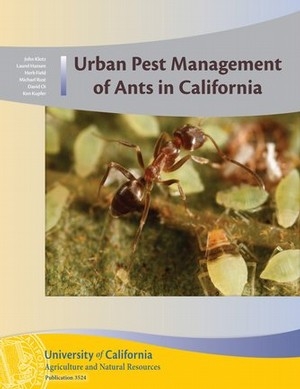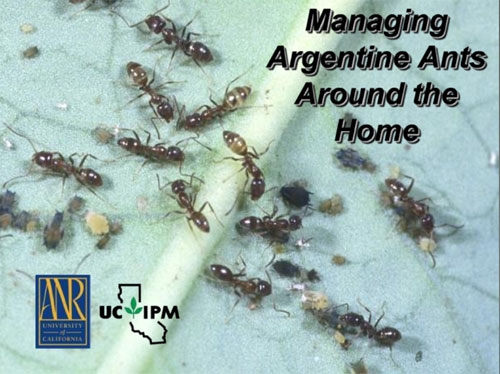Posts Tagged: ants
Bringing ants to their 'skinny little knees'
Redding Record Searchlight columnist Laura Christman described her reaction to a stubborn ant problem with hyperbole and maybe a tiny bit of truth in a recent column.
"Get out! I do not care if I have to spray you with a chemical that has the half-life of plutonium and kills all living things within three blocks. I want you GONE!" Christman wrote.
"I did not actually say that," Christmas confessed. "But I thought it. And right about then, the ants left . . . . I know they will be back."
That's why, she said, she was pleased to have the opportunity to review UC ANR's new publication Urban Pest Management of Ants in California. The 72-page book, which details environmentally sound ant control measures, was written for pest control professionals, but is also a helpful reference for homeowners. The publication is available in the ANR Catalog for $20.
After talking to the author, UC Riverside entomology specialist emeritus John Klotz, and reading the book, Christmas reached a common sense conclusion: Controlling ants is not a matter of doing one thing, but several things.
Klotz told Christman that ants can be persistent, but with persistence they can be controlled.
"So I'm not giving up," Christman declared. "I hope to determine just who my ants are and then bring them to their skinny little knees."

A new publication that details urban ant control.
UC offers solutions to perennial ant problem
Simple, smart and safe ant invasion solutions from UC Cooperative Extension were shared in newspapers around California today. The article, written by John Sammon, originated in the Santa Cruz Sentinel, and was picked up in the San Gabriel Valley Tribune, the Oakland Tribune, and the Pasadena Star-News.
The reporter used a UC Cooperative Extension information sheet as a source for background on ants. His story focused on the common Argentine variety, small black ants native to Argentina, Brazil, Paraguay and Uruguay. The ants reached the U.S. in the 1890s on coffee ships from Brazil.
In California, Argentine ants displace native ants and the small animals such as lizards that depend on them for food. The article said the ants also harm native plants that depend on native ants for seed dispersal, and they protect insect pests on agricultural crops by driving off species that prey on them, according to the UCCE information sheet.
The article also quoted UCCE Monterey County entomologist Jian Bi, who said homeowners should empty trash and make sure food particles are cleaned and containers tightly closed. In addition, he told the reporter that common household cleaners like Pinesol or Windex can be sprayed on ant trails to make the animals confused or disoriented by removing their scent trail.
"Like people, ants are community-oriented," Bi was quoted. "They're also highly organized."
Sammons collected the following strategies for preventing home ant invasions from home improvement and pest Web sites and UC Cooperative Extension:
-
Empty trash frequently.
-
Make sure food particles are cleaned up, counters wiped and food containers tightly closed.
-
Wash invaded areas with warm soapy water, or spray with a household cleaner to remove ant scent trail. A vinegar and water solution will also work.
-
Eliminate ants' water sources, such as leaks.
-
Caulk and seal cracks and crevices around the home's foundation.
-
Remove leaves, mulch and wood near the foundation of the home.
UC has produced a 20-minute video to help consumers identify, understand and manage Argentine ants. In addition, a diversity of resources - including additional videos, information sheets and photos - on ant management are available on the UC Integrated Pest Management Web site.

The opening screen of the UC IPM video about Argentine ants.
